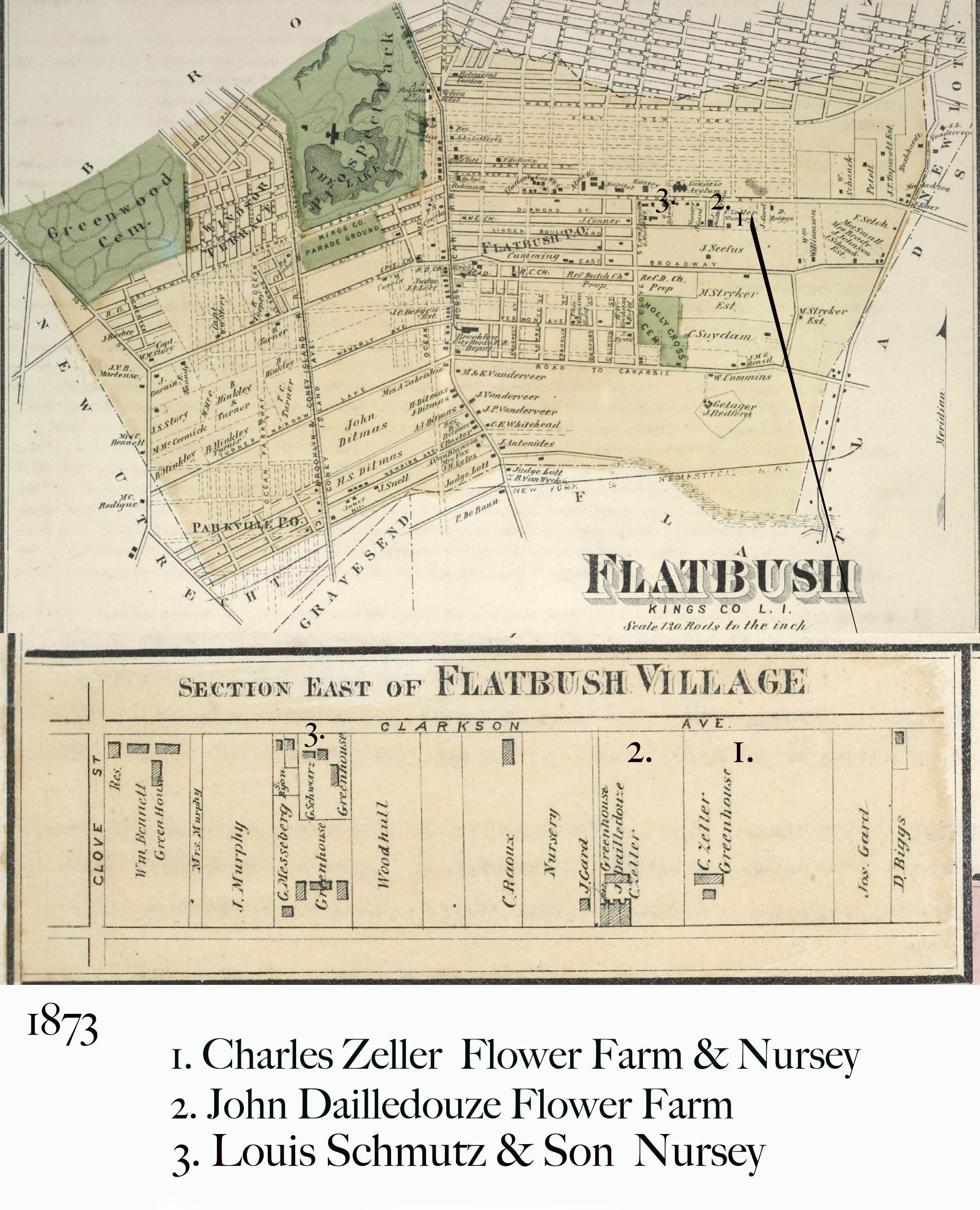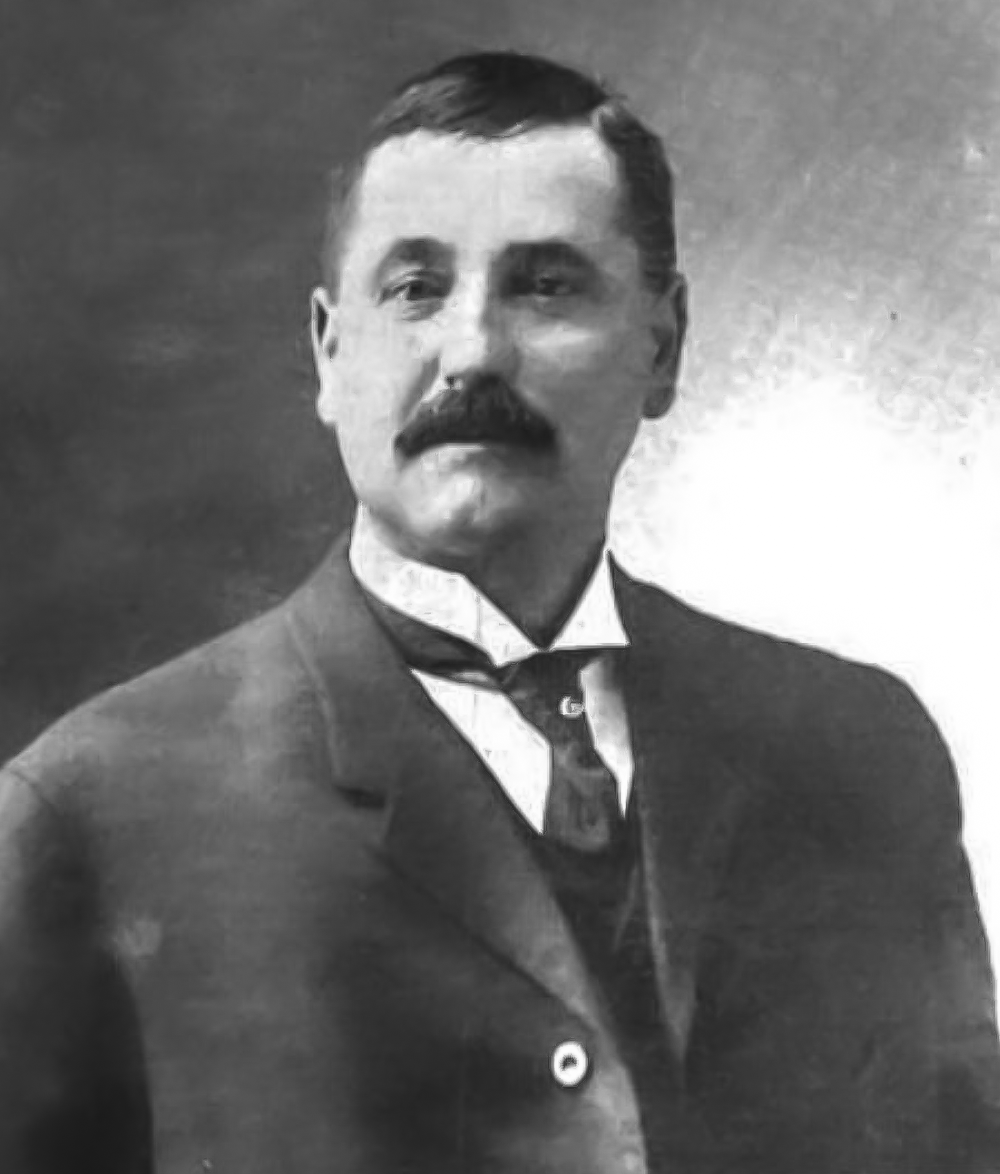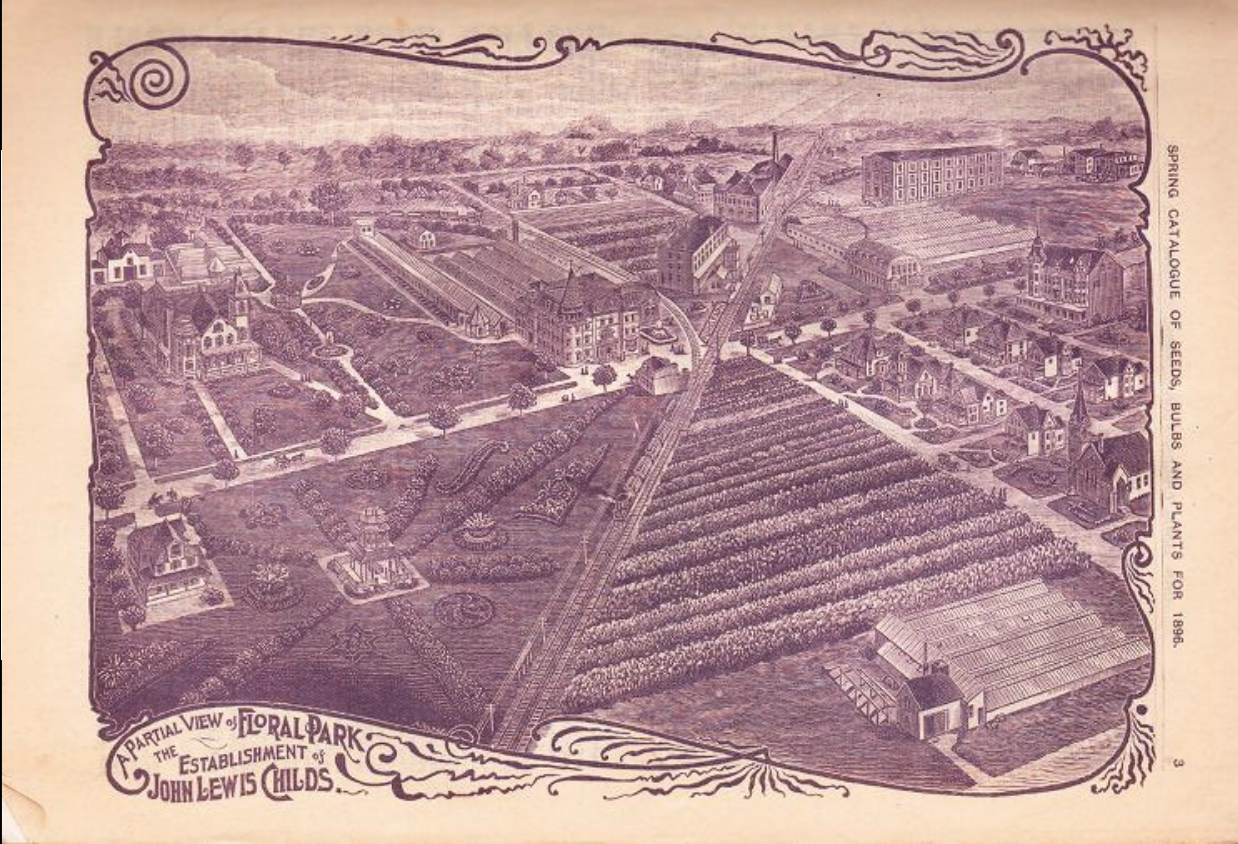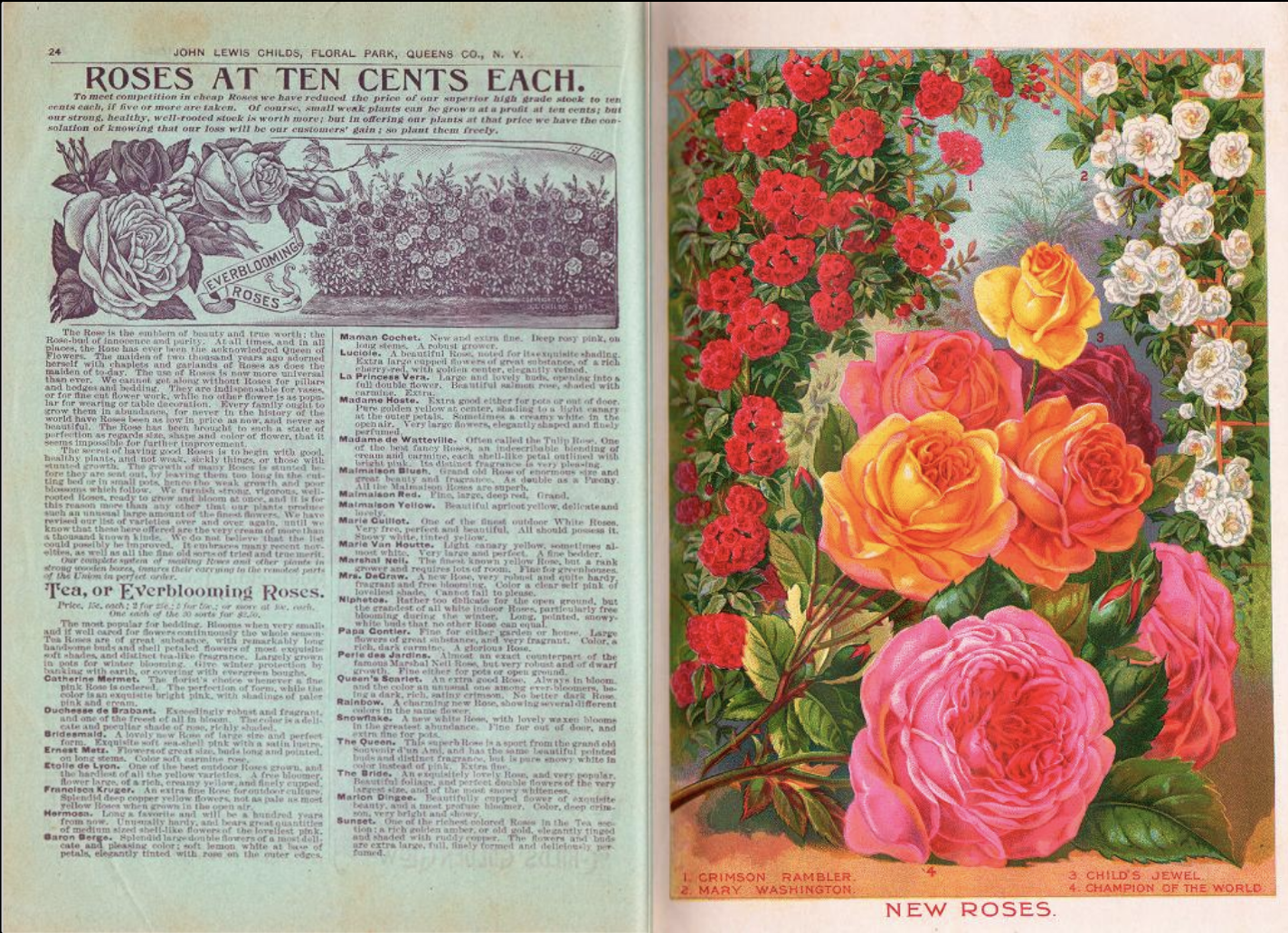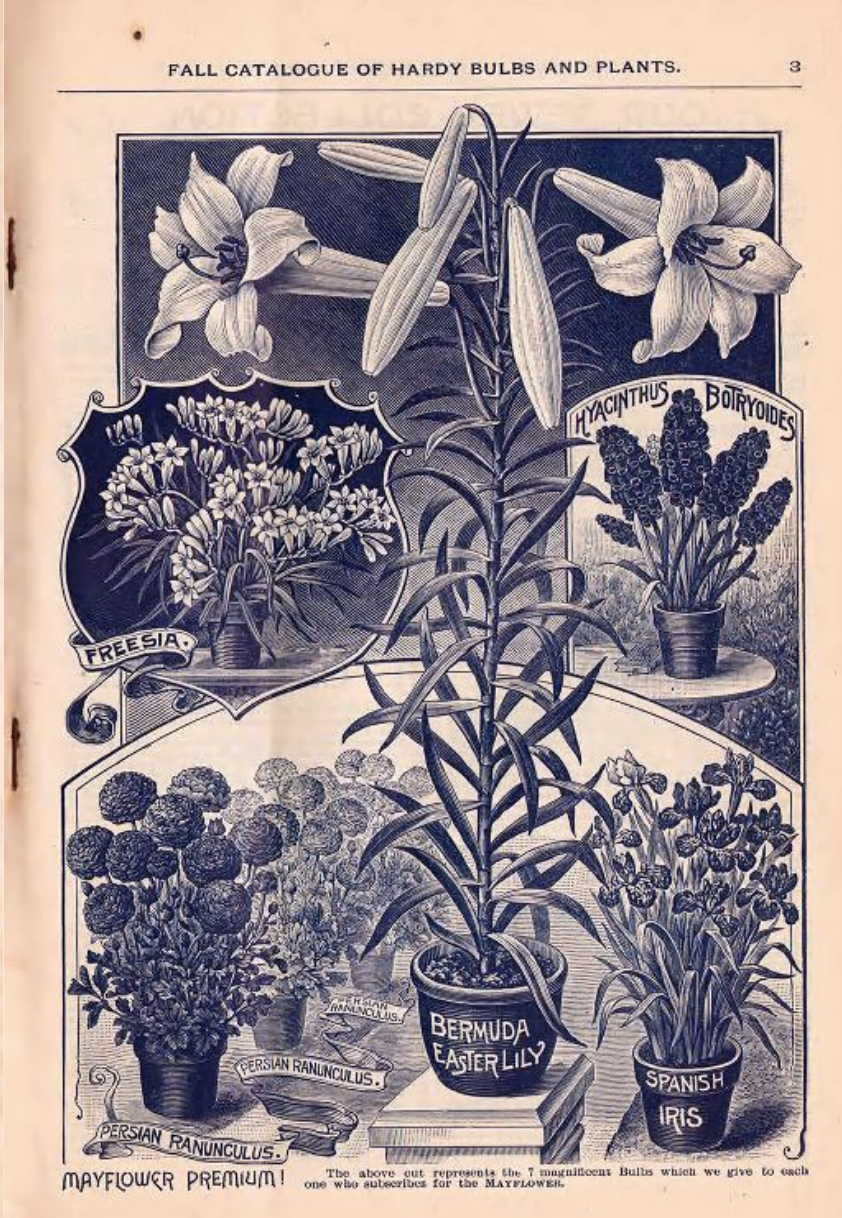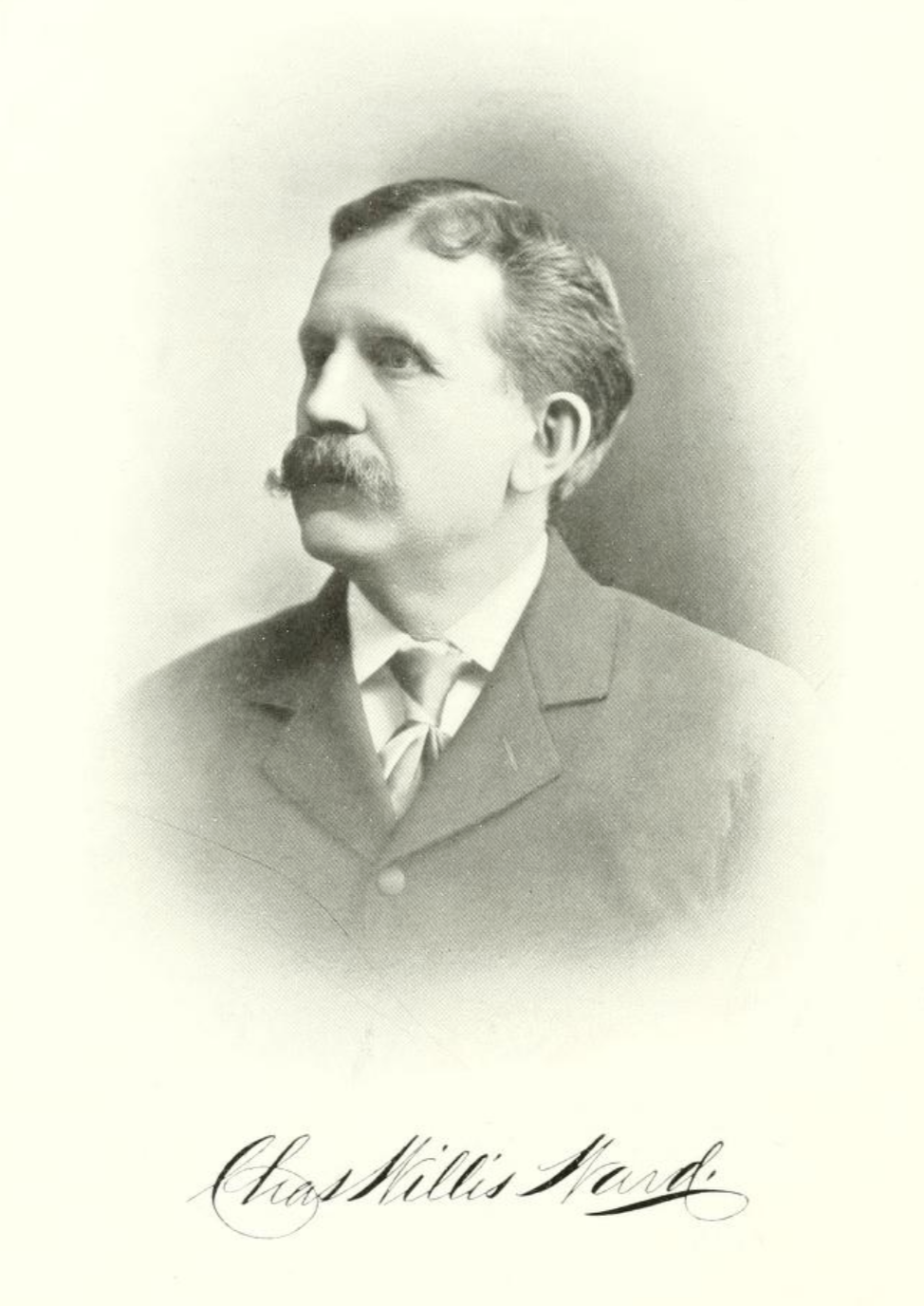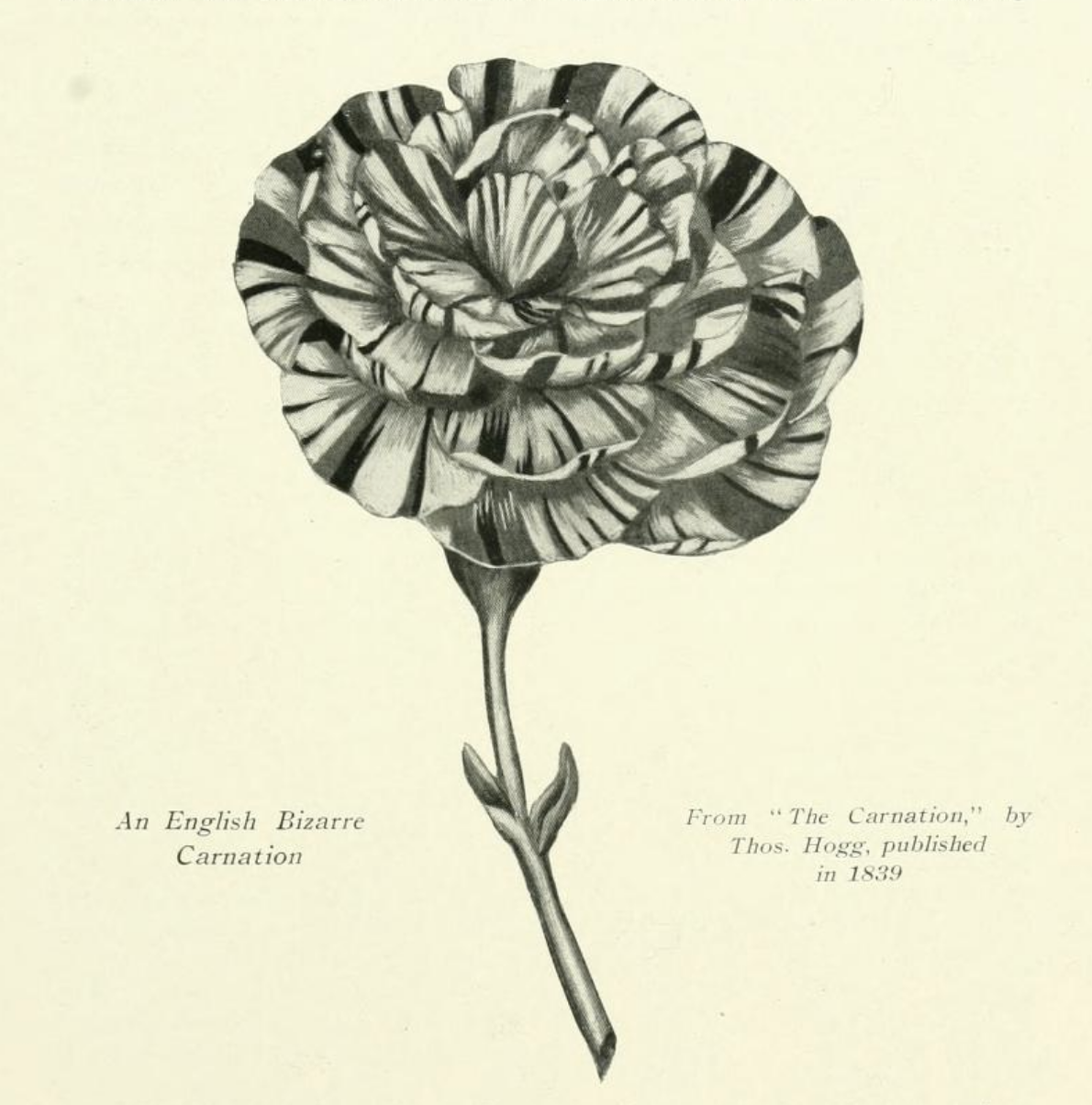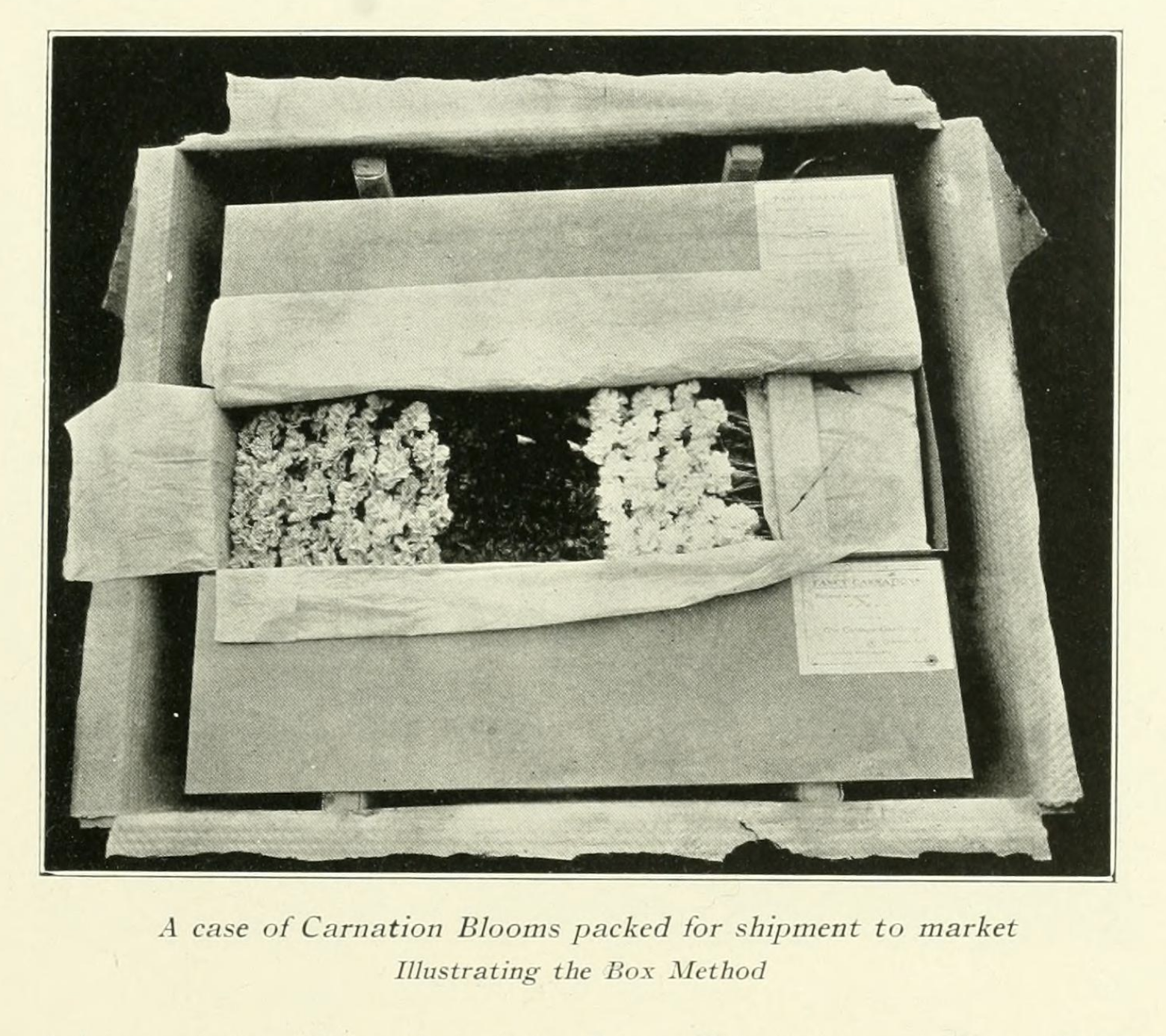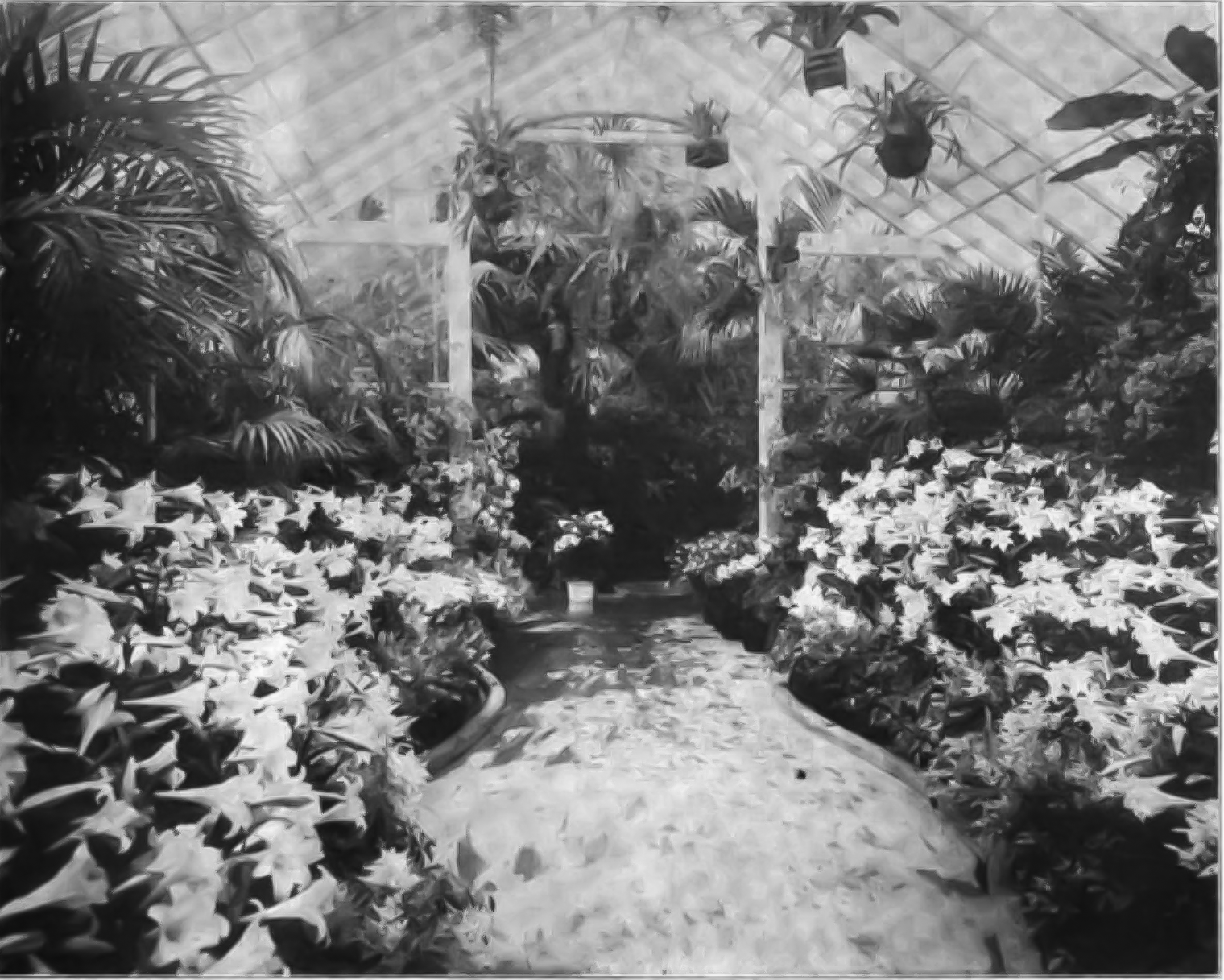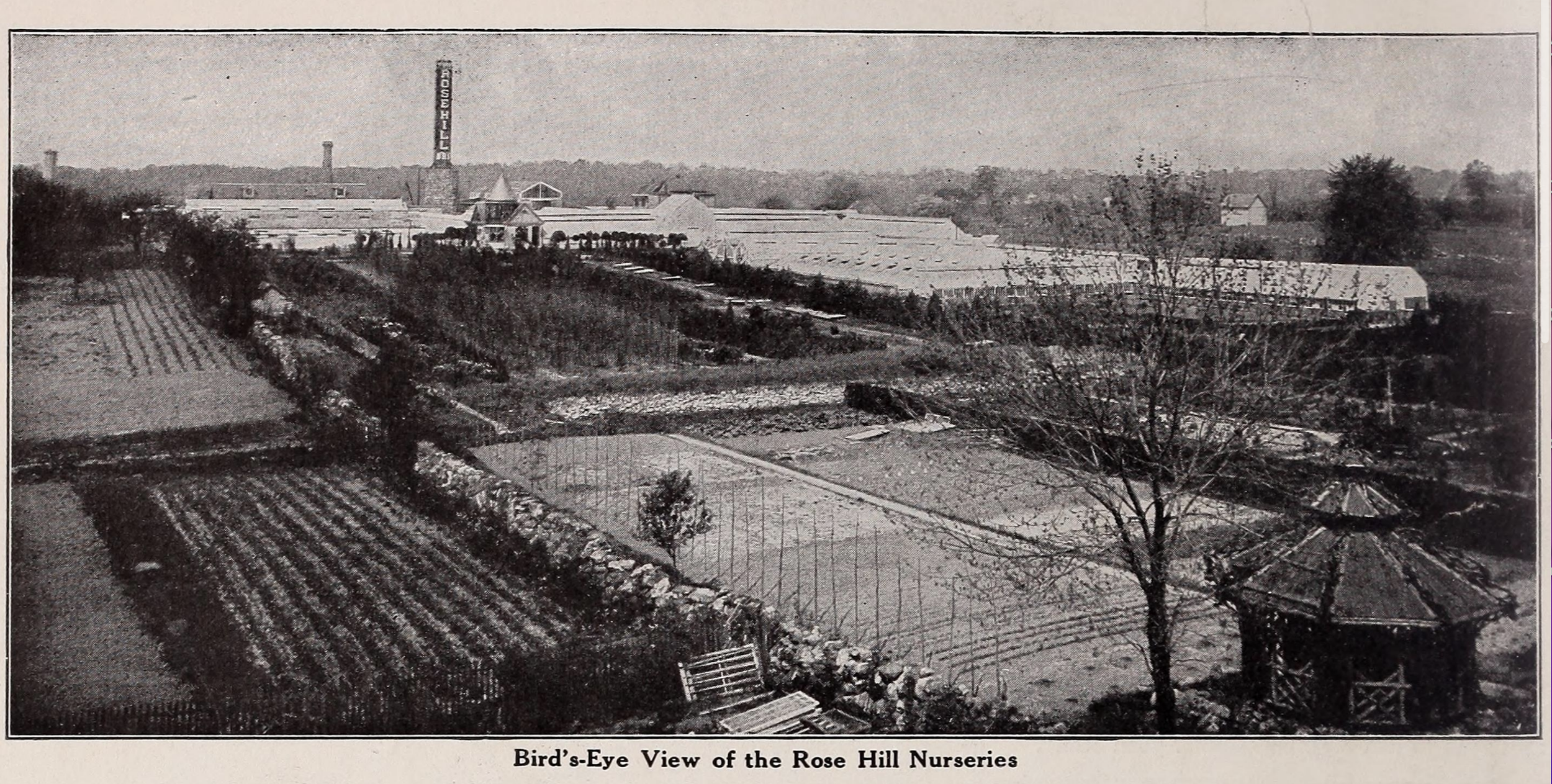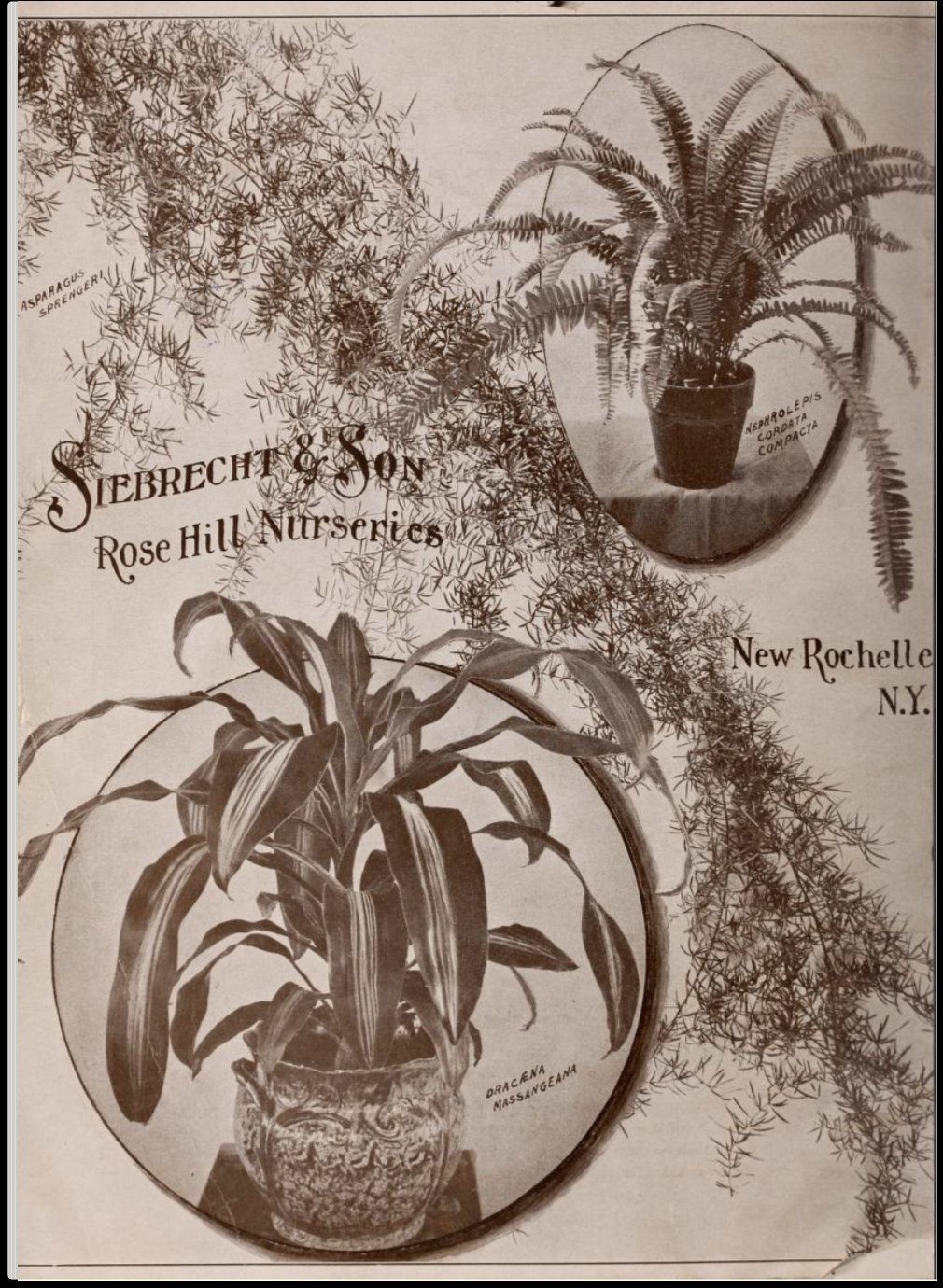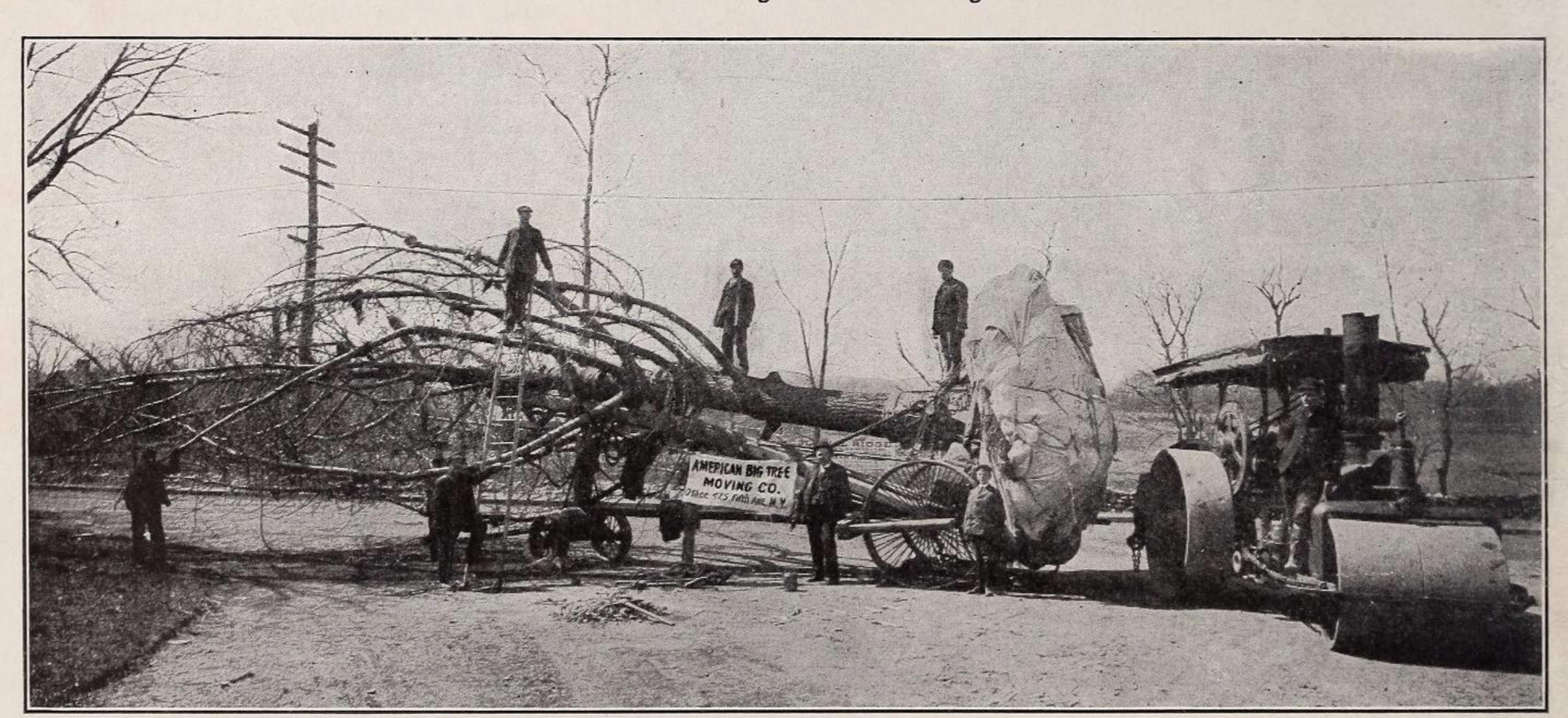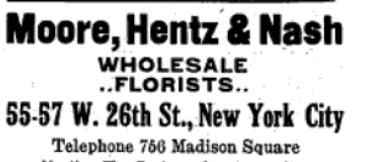
1861 -1930s Flower farms
Many of these farms & greenhouses that supplied the floral district with fresh-cut flowers were from the surrounding regions. Such as Long Island, New Rochelle, New Jersey, and northern New York state as well. Many of the wholesale companies were able to have their farms as well.
Below I’ll be highlighting the known farms of the late 1860s to 1910 that contributed to the success of the floral industry of New York and beyond.
Now, understand that this was the first time in New York’s history that there was a surge in flower farming because of the innovations of greenhouse efficiency and also the talent of the flower farmers coming from other establishments from across the seas. So the great affordability to made it the perfect storm for florists to flower farmers to gain a windfall cash for 100 years. Their weren’t issues of transportation as much, because the flowers were farmed locally, THE FUEL FOR TRANSPORTATION WAS HORSES AND THEIR WASTE WAS RECYCLED BACK INTO THE FIELDS. SO THIS INDUSTRY WAS incredibly GREEN FOR THE FIRST 40 YEARS. The packaging was made of recycled wood and newspapers. SO THIS INDUSTRY WAS incredibly GREEN FROM 1840S TO 1920S.
Below are a few commercial AND industrial scale companies that supplied the district from 1860 to 1920.
Farms are from
Brooklyn -Queens-New Rochelle -Long Island-New Jersey
This time, the Retail florist purchased GET HUNDRED OF FLOWERS FOR $5.00
New York City Flower Farms & Nurseries
Charles Zeller & Son Farm
Flatbush, Brooklyn
ESt. 1861
Mr.Zeller was one of the first to grow carnations from seedlings in America.
He was born & raised in Alsace, France. After his parents death when he was just a kid, his uncle took him to Germany where Got has experience as a general florist, nursery, landscaping, and vegetable work. In 1841 he moved to back France and couldn’t take the culture and dodged the bullet of the war of the french revolution he moved to New York at the age of 23. He had a hard time trying to find work because many of the jobs were taken in the floral industry and the season came to an end, so he found work with the Hudson River Railroad Company for the winter season. Where he worked as a gandy dancer, LOL, that was the nickname for the chain gang. He earned the respect of the Iris Chain gang crew because he knew how to handle a pick ax, crow, bar and shovel. In the spring he worked with a landscaper/florist John Dailledouze, they became partners for a time and created a green houses in Flatbush, Brooklyn. Below you can see his establishments. They were pioneers of carnations during their time in Flatbush. They won awards and a reputation of amazing quality.
Flatbush, Brooklyn New York
12,000 square
feet of glass - orange trees, palms, primroses and flowering plants
By 1903 the the Greenhouses were in full production. It's amazing to see what Flatbush looks like back then. Currently NOW AT THIS LOCATION, IT’S JUST BLOCKS OF BROWNSTONE HOMES AS FAR AS YOU CAN SEE.
John Dailledouze
Was raised in Geneva, Switzerland. He trained as a florist from his father. He migrated to Flatbush, Queens. This is where he met Charles Zeller and formed a partnership. They will continue to work with each other even after John couldn’t continue the partnership. The variety of carnations he introduced was Prosperity, Alice Roosevelt, and the Boston d’Or. These were well-sought-after carnations at this time. They were more sought after than roses. John life was cut short, but had an impact with his carnations for that generation.
Dailledouze Brothers
In 1892 the title was transferred to John Dailledouze sons, their greenhouses were huge, 77,160 square feet of Carnations & chrysanthemums. They also produce the famous No.666 carnation!
Louis Schmutz & Son Flatbush Celebrities
established their business in 1879
Flatbush, Brooklyn, New York
est. 1879
well loved & respected by all who knew them in their community and the floral district. THey grew Ficus, palms, and a general stock of bedding plants are raised. His greenhouse was located at 99 Clarkson Street. It was 15,000 square feet.
est. 1879
Anton Schultheis
College Point, Queens N. Y.
Est. April 1st. 1885
At the age of 17, Anton's passion was roses. His apprenticeship began in 1877 at his older brother's establishment. His Brother’s business at that time was considered to be the largest rose-Growing establishment in Germany; as to its size, they low-budded hundreds of thousands of roses, and, in addition, grew over 50,000 standard trees. Seeking more knowledge he found 2 growers from New York & NJ. There they convinced him to come to the United States. So he set sail from Germany to sell his brother roses to the New York Floral district in 1882. There he noticed the need to create more hybride roses. So he got a plot and created a greenhouse of 20 by 50ft. His hybrid roses took off with cut flowers wholesale companies and he had over 104 vararites of roses in 1885.
1916
John Scott
Keap Street Greenhouses
East 45th Street & Rutland Road
Flatbush, Brooklyn
Charles Krombach
greenwood, Brooklyn
est. 1876,
had a 30,000 ft. greenhouse
Supplied Large quantities of bedding and Easter plants, etc., which were supplied to the wholesale companies of 28th Street in Manhattan and Brooklyn for 36 years.
J. M. Keller Florist & Greenhouse
Bay Ridge, Brooklyn
Est. 1872
Greenhouse of 53,000 square feet of glass, devoted principally to palms, foliage plants, and Winter and Easter flowering stock. Supplied cut orchids for the floral district in New York.
Mrs. P. B. Meissner
730 Flatbush Avenue
Est. 1885
This establishment was founded by the late Mr. P. B. Meissner in 1885, and now comprises 40,000 square
feet of glass, devoted to the growing of palms, ferns, especially Adiantum Farleyense, orchids, cyclamen, and other plants.
David. Y. Mellis
3421 Snyder Avenue
Flatbush, N. Y.
he owned 2 blocks since 1889. He had blocks of nursery structures in which he grew carnations and roses. He was situated next to the Holy Cross cemetery. His daughters and wife took over after he died in 1914 at the age of 94. Currently, the house was torn down and the property made way more housing.
Louis Schmutz,
Flatbush, Brooklyn NEW YORK
Founded 1879
Besides being a great bowler for the New York Florist Club for 18 y, he also provided excellent quality general stock of bedding plants in a 15,000 square foot greenhouse.
Abraham. L. Miller
Brooklyn, NEW YORK
Henry Miller, Oldest Brooklyn Florist & Grower
Photo above ca.1875
Abraham. L. Miller
Mr. Abraham Miller inherited the establishment of 290 Jamaica Avenue (above image), Brooklyn inherited it from his father Henry, in 1897. His father was born in Alezy, Germany. He arrived in New York in 1842 at 18 years of age and secured a position as a gardener at Ex-Gover Morris. 3 years later he left and started his own business as a grower. He created 3 greenhouses of 50,000 square feet. Which grew Christmas and Easter plants, Carnations, and cut flowers. He also grew the best quality herbaceous on a 13-track lot. His son, Abraham took over his father’s business after he retired in 1897.
John Scott
Keap Street Greenhouse
Rutland Road and E. 45th Street
Flatbush, Brooklyn
Est. 1893
John Scott was from Scotland and was taught by his father the basic skills of gardening. Soon he took on apprenticeship with other professional gardeners who worked in At the end of his apprenticeship, Mr. Scott entered as a nurserymen of Edinburgh, for a short time. This is where he trained to grow orchids, vines, and flowering plants for the highest of the society in Scotland. Then he got employment at Eggleton Castle, Ayrshire, Scotland for three years. After he was employed at Taymouth Castle. From there he went to, Ayrshire, Southern Scotland. Soon, he set his aim for New York in 1888, where he found work at Hoosick Falls, N.Y., on the estate of Mr. John Hobart Warren. After a few years, he established his business in Keap Street, Brooklyn, N.Y. He had a 60,000-foot greenhouse. He became a member of the New York Florists' Club for about ten years and served as a trustee, and in 1906 as its president. He was also a member of the S.A.F.; the N.Y. and N.J. Association of Plant Growers, of which he was a director; of Clan Macdonald; and Clinton Lodge, F. and A.M., Brooklyn. Tragically he was murdered by a discharged employee in 1908 at the age of 40. His wife sold the businesses soon after.
Anton Schultheis
College Point, Queens, New York
EST. 1888
Anton Schultheis, one of New York's pioneer growers of Roses. Studied in gEurope's leading rosarians, and had at Steinfurth the largest Rose nursery in Germany. he went to England in 1880, and there worked for one of the best known fruit and Rose nurserymen for two years.
He migrated to the United States in 1882, and for a time acted as his brother's selling agent. His knowledge of Roses brought him into contact with all the Eastern Rose forcers and after some two years, he decided to start as a grower at College Point. Roses were his main specialty and being an expert propagator he supplied various growers with stock. The novelties as they appeared in Europe were imported and tested by him. He started with one small greenhouse, but in 1888, he built two 150ft. by 16ft. houses, then considered giants which, with the three 50ft. by 16ft. houses he already possessed, gave him a considerable area of glass. During the past six or seven years, Mr. Schultheis gave most of his time to growing Roses as a hobby, and with the enthusiasm of a youngster, he took to cross-breeding; one of his seedlings a salmon pink, he named after his wife, Louisa Schultheis.
John H. Taylor,
Bay Side, Queens, New York
being famous as a rose-growing plant. Growing over 6,000 buds of roses of Meteor, Mme. Cusin, Perles, Niphetos, Mme. de Watteville, Brides, PapaGontier,
Mermets, Magna Charta, and Gen. Jacqueminot. Carnations of Hinsdale, May Queen, Orient, Silver Spray, Paxton and Buttercup. Strong healthy plants atthe lowest prices. Write for particulars.
Charles. H. Allen
Floral Park, Long Island, New York.
Former President of the New York Florist Club 1885-86, Specializing in Carnations & Glads BULDS AND ROOTS.
John Lewis Childs
The first to send bulbs & seeds through the mail from New York
Floral Park, N. Y
EST. 1875
In 1869 at the age of 19 1875, Mr. Childs started a business on his own account in a small wooden building near Queens, near Floral Park. He was the son of a farmer and was trained in horticulture by C. L. Allen of Queens from 1867-1868. his business grew and supplied plants and cut flowers to the floral district. Seeing an incredible opportunity he launched a seed & bulb ordering catalog. Which he cultivated his seeds from the flowers, and plants he grew himself. He was able to have high quality and control over the age, quality, and color of the seeds. His Business grew exponentially, and he was able to create a village. The village of 20 buildings in Floral Park, hotels, lumber mills, and his printing press. He created a public park for the community, built the first school in town, and served as the first village president, which later became the office of mayor. He held over 1,000 acres of land.
He also created an amazing children's subscription magazine at was so affordable, it was .30 cents for a year. Each month the kids will get a magazine stories, to help school children from the ages of five to fifteen, or older, in as many ways as possible. There will be hints and help for them in both work and play. Nature study, gardening, athletics, hygiene, deportment, stories of travel, health-mental - physical hygiene.
Below are some of the seed catalogs he produced, selling over 500,000 of them in the spring of 1892!
John Donaldson
Elmhurst, N. Y.
The Humble Giant
EST. 1898
John Donaldson was born locally 12th July 1855 in Scotland, son of a farmer, started his gardening apprenticeship which lead him to Duff House. Which was the estate of the Duke Fife, who was closely related to the Royal family of England. He worked on private estates for a couple of years. Then he worked for Veitch Nurseries, London. He later worked for the horticulture department of the Zoological Gardens, Regent Park, London. He soon left London for New York. He soon got a job with William Wilson a well-known lily grower in Astoria at the age of 17 in Long Island. Then he worked for T. Burroughs Hyatt. 1898 he left Mr. Hyatt and started his nursrys growing carnations, lilies, Ivory, Bonnaffon, Hallida,y and Mrs. Jerome Jone Mums in Elmhurst Long Island. He had in 1912 10,000 Scottii Ferns, lilies, Maud Dean, Bonnaffon, Halliday, and Easter plants. He owned 28 city lots and a whole city block. He owned three 300 ft greenhouses loaded with plants.
He worked his way up the New York Cut Flower exchange of 16 years before becoming President. He also been a member and became President of the New York Florists' Club 1890.
He was member of the Order of the Scottish Clans and Masonic Order on 24th street, New York City. He was one of the best bowlers in the Astoria Bowling Team. He was an old school Presbyterian of a man. His net wealth was over 10 million dollars in 1912.
Below is Duff House where he received and maintained the herb garden for the estate during his youth in Scotland.
Charles Willis Ward
Cottage Gardens Nurseries
Queens, N. Y.
Est. 1874
As a leading grower of carnations, he helped to establish the American Carnation Society. He also helped to create the American Peony Society, over which he presided for many years. There is more to his story, but I’ll just keep to the flower part.
His story began in 1874 when he took on an apprenticeship job with C. L. Allen of Queens in horticulture. A few years later he began renting, then buying land in nearby East Hinsdale, Queens County, near other nurseries. He supplied his flowers to the Floral district for many years. After he died in 1920, his wife continued until the depression and she sold it off for $2,000,000.
Below are the images of his book, family, and his estate in Queens.
It’s amazing to see how efficient and careful they were with packing the carnations in the above image.
Henry Augustus Siebrecht
New York City & New Rochelle County
Est.1867
Henry Augustus Siebrecht was born in Germany and came to the United States at the age of 17. He received his training in horticulture at the University of Göttingen. After working at Buchanan's Nursery in Astoria, Queens, he opened his floral shop on 15th Street & 6th Avenue in 1867.
Henry Siebrecht became known for his innovative use of orchids in bridal bouquets, which contributed to his success in the New York market. He played a significant role in popularizing the use of orchids in floral arrangements during that time.
In 1870 he established a second florist shop & nursery (above image) 5th Avenue on 42nd Street (below image) Maintaining his plants from imports from direct connections to botanical and commercial establishments of Europe, the East Indies, Australia, and South America. His reputation exploded and used his landscaping talents to create further income.
Below is the image of his shop’s upgrade
The backend of his store had a nursery and became so filled with plants coming and going that he needed to expand. During the 20 years, he saved and created greenhouses in New Rochelle called Rose Hill Nurseries.
He hired Orchid collectors to search for orchids in the West Indies. The Collectors would hire the native communities to help find new species throughout the islands of the Caribbean. They would bring them back to Greenhouses to mass produce them in the thousands. He was the first to introduce Orchids commercially to the industry.
His Greenhouses were specifically divided by each species of flowers and plants that needed a stable climate throughout the year. He created the most complete horticultural establishment in the world. So whatever tree or plant you wanted, he had it in his greenhouses. Let’s put it this way, he was the first to grow lily of the valley during winter in 1889. He introduced Japanese & Chinese Ginko trees and helped bring them into popularity.
In 1903, Henry Siebrecht's preeminent establishment stood at 425 5th Avenue, situated on 38th Street. It was here that his renown reached unprecedented heights. The expansive showroom showcased an impressive array of his plants and flowers, solidifying itself as a central hub for the elite of society. Affluent patrons often commissioned Siebrecht for the creation of architectural gardens and exquisite decor to adorn their estates. His clients were Russel Sage, Andrew Carnegie, J.P. Morgan, Ulysses Grant, P.T. Barnum and Boss Tweed. He helped build up Coney Island.
New Jersey Flower Farms & Nurseries
Ernst G. Asmus
West Hoboken, New Jersey
Est. 1873
He inherited the family business of cut flowers when his father retired. He immigrated in 1847 from Germany at the age of 9. He grew up in the business and when he took over the Business he expanded purchasing other nurseries in Hoboken. He worked with the New York flower company wholesale company since its very beginnings, an organization of growers selling fresh flowers under one umbrella. His specialty was fresh-cut roses. His estate was the largest in the late 1800s in New Jersey. The net value of his farms & nurseries in 1934 was $2,000,000. Passed away from a sore throat infection in December 1903.
John Birnie
John Birnie, a renowned figure in the florist industry, established his roots in West Hoboken, dedicating himself to the flourishing florist trade until his passing. His expertise led him to become one of New Jersey's foremost florists, specializing in geraniums, bedding plants, and carnations destined for the bustling New York markets. His reputation flourished alongside his prosperous trade, earning him a distinguished place within the New York Market Growers' Association, where he also served as a director.
Beyond his professional endeavors, Mr. Birnie was deeply engaged in his community as a prominent Mason and active member of various other organizations. His residence and business were centered at 400 Hudson Boulevard in West Hoboken.
Born in Buchan, Aberdeenshire, Scotland, Mr. Birnie embarked on his journey in horticulture by serving his apprenticeship at Strachan House. His pursuit of excellence took him across continents, starting from Canada and traversing through Buffalo, New York, where he honed his skills under the mentorship of esteemed figures like Wm. Scott and W. J. Palmer. Transitioning to Brooklyn, he furthered his expertise while working for James Weir before eventually establishing his own thriving enterprise as a grower in Jersey City.
Bobbink & Atkins, Rutherford, N.J ( ROSE GROWERS ) (1890-1930s)
This firm, which was established in 1894. They were known for growing a huge variety of roses. Their farm produced half-million roses on 500 acres. They sold their roses on 28th Street and abroad. They were pioneers of roses at that time. They scoured the earth trying to find every rose variety.
Here are a few roses below.
ROSE CITY
Madison, New Jersey
By the close of the end of the 1800s, Madison was home to over 45 rose growers, who shipped their products to New York City via nearby trains. Given the cost involved in the year-round care of roses, many greenhouses were initially found on the sprawling estates of Madison’s wealthiest residents. By 1889, roses were being shipped into New York City by train at a rate of 40,000-50,000 per day.
T. J. Slaughter
Madison (ROSE CITY), New Jersey
Thomas J. Slaughter was born in 1822 and grew up in Green River County, Kentucky. He started working at the age of 14. In his mid-20s, he traveled south to sell goods to U.S. soldiers during the Mexican-American War. However, when he arrived, the war was over, so he sold his goods locally as he traveled back north.
At the age of 29, Slaughter became a traveling salesman in St. Louis for a grocery house. In 1863, he moved to New York and established Norton, Slaughter & Company at 40 Broad Street, specializing in the cotton and tobacco trade.
At 55, in 1877, he purchased an estate with an abundance of plants and added five greenhouses for commercial purposes. Slaughter hired John N. May, a leading rose authority from England, to manage the rose-growing operation.
In March 1888, Slaughter's rose range was expected to market half a million buds, with revenue projected at $1.78 per plant. The American Beauty Rose, prominently featured in the Academy Award-winning movie of the same name, fetched $5.09 per plant. Despite the increased supply from Madison, prices remained high.
The March 1, 1889, edition of the Madison Eagle reported that an early morning train carried between 40,000 and 50,000 roses daily into New York City, nearly filling the express car. The crates returned empty each evening, ready for another day's load. The article stated: “Roses, being more perishable than fruits and berries, have led to a thoroughly systematized business by the growers, carriers, and buyers, ensuring no delays in transit. Roses picked in the evening are in the hands of wholesale dealers by 9 a.m. and generally, all sold to retail florists before noon the same day.” Slaughter was an early grower of roses for the district in New York.
Scotto Clark Nash
Scotto Clark Nash, born in Pittsfield, Massachusetts in 1841 and later relocating to Brooklyn, shifted to horticulture after facing business setbacks. He settled in Clifton, New Jersey, where from the 1890s to the 1920s, he became renowned in the New York Floral District for his exceptional cultivation of "American Beauty Roses" and 8 others . Nash collaborated with Moore & Hentz, a prominent wholesale firm based at 57 West 26th Street in New York City.
In addition to roses, Nash developed a strong passion for water gardens. His first major project involved transforming a mosquito-infested marsh behind his Clifton home into a celebrated water garden, which became a local attraction showcasing his gardening expertise. Teaming up with fellow horticulturalist William Tricker, Nash specialized in aquatic plants. One of his most notable features was the Victoria Regia, a giant water lily native to the Amazon rainforest in Guyana, which adorned his pond with its impressive 12-inch-wide flowers in shades of red, pink, and purple, accompanied by lily pads measuring up to 6 feet in width.
MORE TO COME…SOON.!
MORE TO COME…SOON.!



